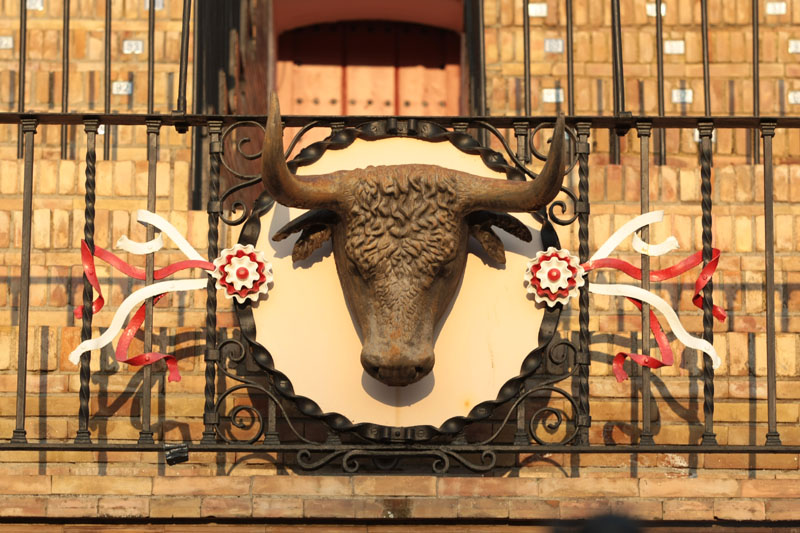
La temporada taurina está en marcha un año más desde la tradicional corrida del Domingo de Resurrección. Hay festejos programados hasta finales de septiembre, con la Feria de Abril como momento cumbre. Las figuras del toreo, algunas leyendas vivas y jóvenes promesas pasan de nuevo por una de las ciudades más emblemáticas de la tauromaquia.

The bullfighting season is running once again from the traditional Easter Sunday ‘corrida’. There are celebrations scheduled until the end of September and with the April Fair as the outstanding stage of the season. The most renowned bullfighters take part in the bullfighting evenings of Sevilla, one of the most iconic cities in this range.
En efecto, Sevilla guarda un lugar muy especial en la fiesta de los toros y está en su origen mismo. Se considera que la tauromaquia representa la evolución de los trabajos propios de los mataderos urbanos del siglo XVI. En concreto, el Matadero de Sevilla albergó algunas de las recreaciones más famosas de la conducción, encierro y sacrificio del ganado, tanto que creó afición entre la nobleza a caballo, primero, y en el pueblo a pie, después. En el siglo XVII ya empiezan a resonar nombres de matadores de toros.
De los mataderos a los lugares públicos, como la Plaza del Duque, la Plaza de San Francisco o la original plaza rectangular del monte Baratillo, sustituida por otra ovalada y donde hoy se levanta la Plaza de Toros de la Maestranza. Se trata de una las plazas más hermosas del mundo, así como de las más antiguas, un auténtico templo del toreo.
Y de Sevilla son también algunos de los toreros más aclamados de la historia, desde las primeras figuras conocidas, como Costillares, Pepe-Hillo y Pedro Romero, los del siglo XIX como Paquiro, Cúchares, Lagartijo y Frascuelo, y la edad de oro del siglo XX, primero con la rivalidad entre Joselito El Gallo y Juan Belmonte, con Ignacio Sánchez Mejías, y luego con los Pepe Luis Vázquez, Paco Camino, Curro Romero, Espartaco o Morante de la Puebla.
Tardes de toros en Sevilla.
Indeed, Sevilla holds a special place in bullfighting and is in its very origin. It is considered that bullfighting represents the evolution of the works of urban slaughterhouses of the 16th century in Spain. Specifically, the Matadero de Sevilla hosted some of the most famous recreation of driving, confinement and slaughter of bulls and cows, while the nobility created hobby horse first, and in the village on foot, then. In the 17th century begun to resonate names of bullfighters.
From slaughterhouses to public places such as Plaza del Duque, Plaza de San Francisco or the original rectangular ‘plaza del monte Baratillo’, replaced by another oval where the Plaza de Toros de la Maestranza rises. This is one of the most beautiful places in the world and one of the oldest, a true temple of bullfighting.
Some of the most acclaimed bullfighters of history are also from Sevilla, from the earliest known figures like Costillares, Pepe-Hillo and Pedro Romero, the 19th century ‘matadores’ as Paquiro, Cúchares, Lagartijo and Frascuelo, and the golden age of 20th century, first with the rivalry between Joselito El Gallo and Juan Belmonte, with Ignacio Sanchez Mejias, then with Pepe Luis Vazquez, Paco Camino, Curro Romero, Espartaco or Morante de la Puebla.
It’s time of bullfighting in Seville.
